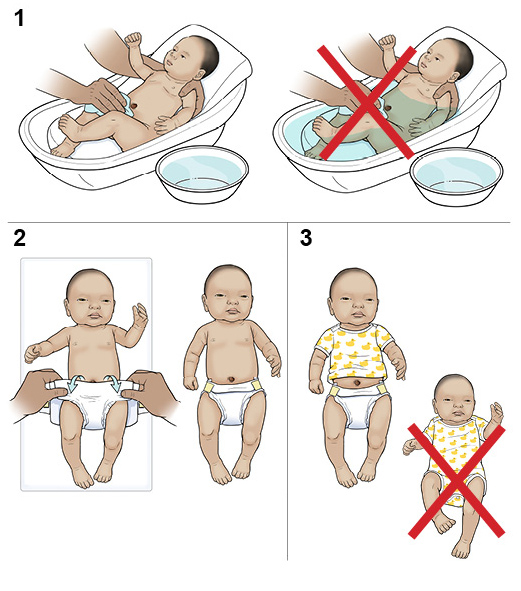A Comprehensive Guide to Umbilical Cord Care for Newborns
The umbilical cord, a vital lifeline connecting a mother to her unborn child during pregnancy, plays a crucial role in nourishing and oxygenating the developing fetus. After birth, this essential connection is severed, leaving behind a small stump of tissue that requires proper care to prevent infection and promote healing.
Understanding the Umbilical Cord
The umbilical cord is composed of three blood vessels: two arteries that carry deoxygenated blood from the fetus to the placenta and one vein that transports oxygenated blood and nutrients from the placenta to the fetus. These vessels are surrounded by a protective layer of jelly-like substance called Wharton’s jelly.
Steps for Proper Umbilical Cord Care
-
Keep the Cord Clean and Dry:
- Avoid bathing the baby until the cord stump falls off, typically within 1-3 weeks.
- If the cord gets wet, gently pat it dry with a clean, soft cloth.
- Keep the diaper below the cord to prevent urine or feces from contaminating it.
-
Inspect the Cord Regularly:
- Observe the cord daily for any signs of redness, swelling, discharge, or foul odor.
- If you notice any abnormalities, contact your healthcare provider immediately.
-
Apply Alcohol to the Cord:
- For the first few days after birth, apply 70% isopropyl alcohol to the cord stump using a cotton swab.
- Gently dab the alcohol around the base of the cord, avoiding the surrounding skin.
- Allow the alcohol to air dry before diapering the baby.
-
Cover the Cord with a Gauze Pad:
- After applying alcohol, cover the cord stump with a sterile gauze pad to protect it from friction and contamination.
- Secure the gauze pad with a small piece of medical tape.
-
Change the Gauze Pad Regularly:
- Change the gauze pad whenever it becomes wet or soiled.
- Use a new cotton swab and gauze pad each time you apply alcohol and change the dressing.
-
Avoid Pulling or Touching the Cord:
- Resist the urge to pull or touch the cord, as this can cause irritation and delay healing.
- If the cord accidentally gets pulled, do not panic. Gently push it back into place and apply alcohol to the area.
Signs of Infection
In most cases, the umbilical cord stump will heal without any complications. However, it is important to be aware of the signs of infection, which include:
- Redness, swelling, or tenderness around the cord
- Discharge from the cord, which may be clear, yellow, or green
- Foul odor coming from the cord
- Fever in the baby
- Irritability or lethargy in the baby
When to Seek Medical Attention
If you notice any signs of infection or if the cord stump does not fall off within 3 weeks, contact your healthcare provider immediately. Prompt medical attention is essential to prevent serious complications, such as sepsis or meningitis.
Additional Tips
- Avoid using hydrogen peroxide or other harsh chemicals on the cord, as these can damage the delicate tissue.
- Do not apply any ointments or creams to the cord without consulting your healthcare provider.
- If the cord stump bleeds slightly, apply gentle pressure to stop the bleeding.
- Once the cord stump falls off, the area may be slightly red and moist. This is normal and will heal within a few days.
Conclusion
Proper umbilical cord care is essential for the health and well-being of newborns. By following these simple steps, you can help prevent infection and promote the healing process. If you have any concerns or notice any abnormalities, do not hesitate to contact your healthcare provider for guidance.

